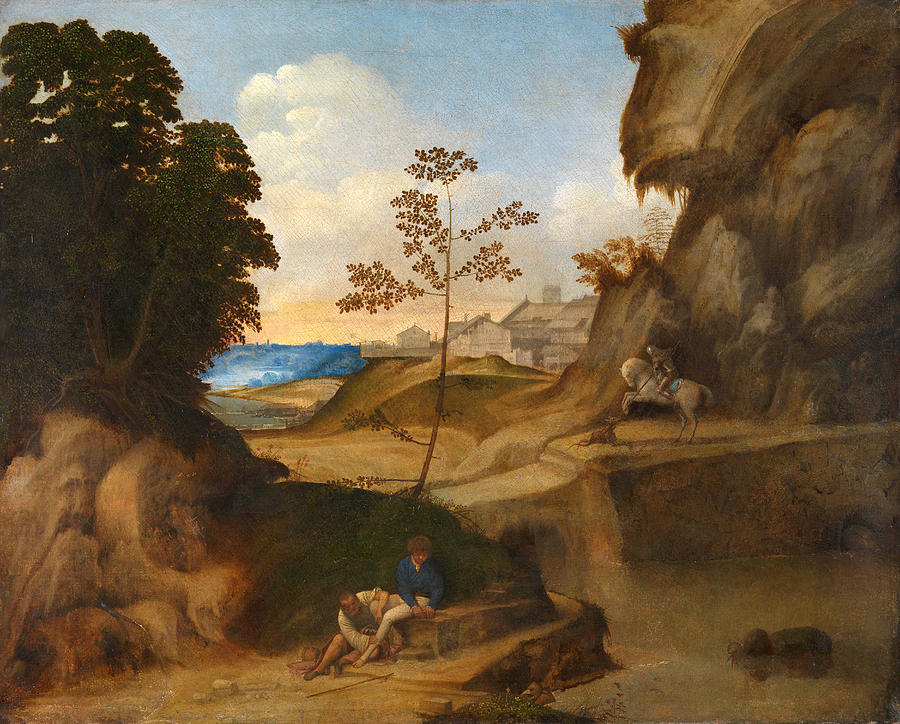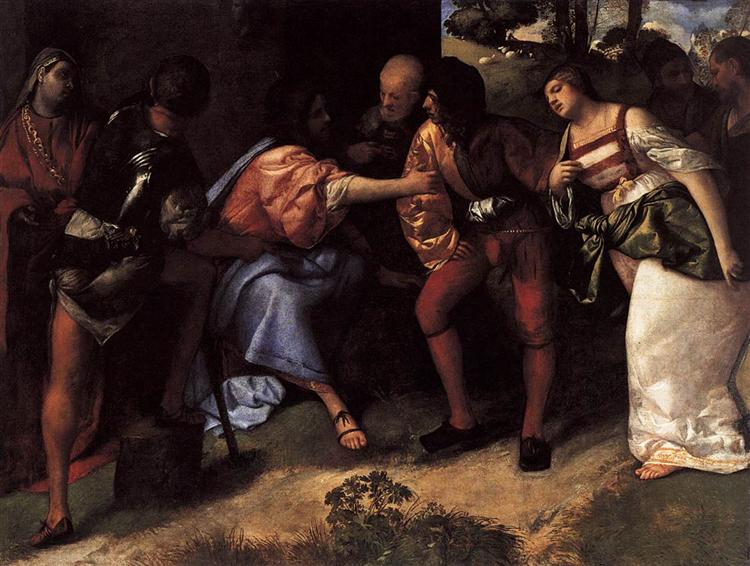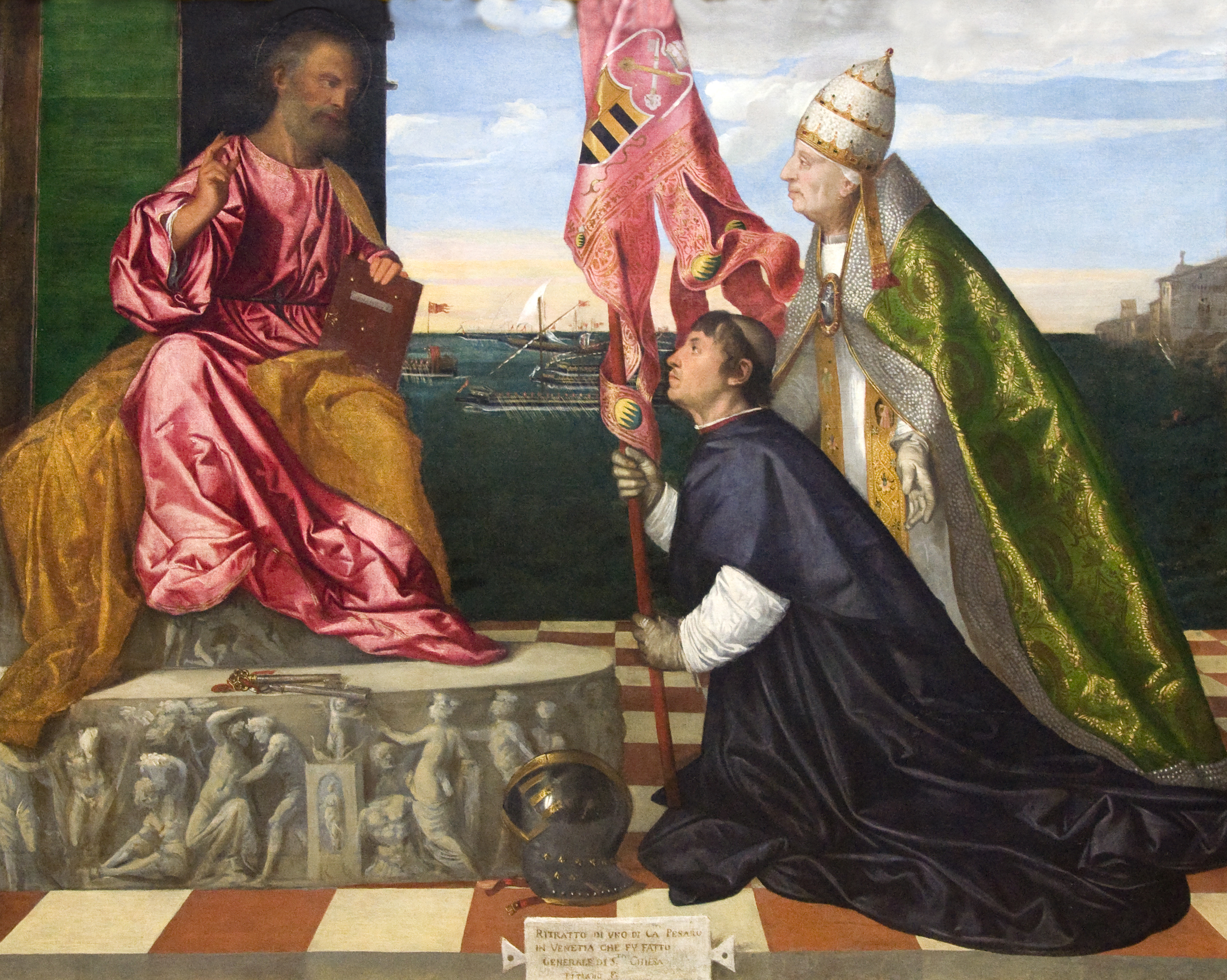12 March–5 June 2016
In March 2016, the Royal Academy of Arts will present In the Age of Giorgione, a focused survey of the Venetian Renaissance during the first decade of the sixteenth century. The exhibition will shed new light on this pivotal period,which laid the foundations for the Golden Age of Venetian painting. It will bring together around 50 works from public institutions and private collections across Europe and the United States, by celebrated artists such as Giorgione, Titian, Giovanni Bellini, Sebastiano del Piombo and Lorenzo Lotto, while offering an opportunity to rediscover other less well known artists such as Giovanni Cariani.
The exhibition will also consider the influence of Albrecht Dürer who visited Venice in1505–6. By the beginning of the sixteenth century Giovanni Bellini had revolutionised Venetian painting, favouring a new naturalism, yet it was the next generation, most notably Giorgione and Titian,whobecame the protagonists ofa new style.Giorgione emerged duringthe first decade of the sixteenth century, greatlyinfluencing and rapidly transforming the stylistic evolution of Venetian art.
These developments were advanced by the young Titian, who would soon become the leading artist in Venice. Little is known about Giorgione’s life, yet the elusive and poetic quality of his work was so powerful that, despite his early death in 1510, his legacy was profoundly felt in Venice and beyond.
Giorgione worked largely for a new type of patron,that of the cultured and sophisticated connoisseur. He proposed a new, more poetic type of portraiture
and created a serene bucolic world as a backdrop to both sacred and profane subjects. Today, there are only a few works that can be attributed to Giorgione with certainty. The exhibition will address the question of attribution, taking a closer look at many of the finest works from the period.
The most important artist to emerge from Giorgione’s shadow was Titian, who became the preeminent artist in Venice following Giorgione’s premature death. While Giovanni Bellini remained in high demand for the commission of altarpieces, it was Titian who developed Giorgione’s soft and sensuous use of color on a larger scale.
Titian’s life-long artistic experiments led to a new era that has since become known as the century of Titian. The exhibition will include key works by Giorgione and the young Titian.
One of the highlights of the exhibition will be
Giorgione’s Portrait of a Man (The San Diego Museum of Art).
Known as the Terris Portrait, after the name of its former owner, the Scottish coal merchant Alexander Terris, it is one of only two known paintings bearing a contemporary inscription on the back of the panel identifying Giorgione as the artist.
Displaying a technique similar to Leonardo da Vinci’s famed sfumato, in which areas of color are blended into one another without perceptible transitions, the portrait epitomizes what Giorgio Vasari praised as the ‘modern manner’.
Further highlights will include
Giorgione’s Il Tramonto (The Sunset) (The National Gallery, London),
Titian’s Christ and the Adulteress (Glasgow Museums)
and Titian’s Jacopo Pesaro Being Presented by Pope Alexander VI to Saint Peter (Koninklijk Museum voor Schone Kunsten, Antwerp).
Also on display will be works by Giovanni Bellini, Albrecht Dürer, Lorenzo Lotto, Sebastiano del Piombo, Giovanni Cariani, Giulio Campagnola and Tullio Lombardo, among others.
In the Age of Giorgione will be arranged in four sections:Portraits, Landscapes, Devotional Works and Allegorical Portraits.
These groupings will allow visitors toexplorethe idealised beauty, expressive force and sensuous use of colour that became the hallmarks of Venetian Renaissance painting,whilstrediscovering one of the most enigmatic and influential artistsof the period.
Organisation
The exhibition has been organized by the Royal Academy of Arts.
It has been curated byArturo Galansino, former Curator at the Royal Academy of Arts and newly appointed Director of the Palazzo Strozzi in Florence
and Simone Facchinetti, Curator at the Museo Adriano Bernareggiin Bergamo, in collaboration with Per Rumberg, Curator at the Royal Academy of Arts.
Catalogue
The exhibition will be accompanied by a fully illustratedcatalogue with contributions from Arturo Galansino, Director of the Palazzo Strozzi, FlorenceandSimone Facchinetti, Curator at the Museo Adriano Bernareggi, Bergamo.
Outstanding review, more images
Another good review with even more images




